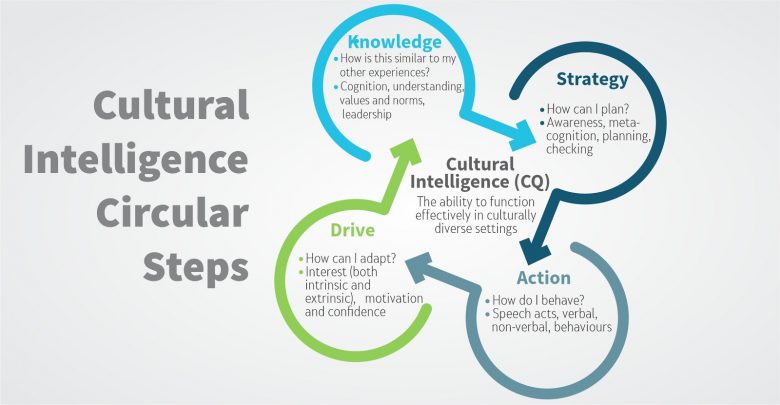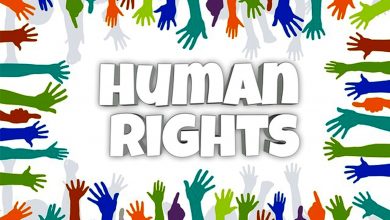
It seems there are 2 lines of thought when it comes to intercultural competence. The first will say that “there is no such thing as culture” and having self-awareness and empathy is more important than developing a deep understanding of the other culture. The other will focus a lot on the greetings, clothing, habits, beliefs, modes of operation of different cultures and promote that learning all of this will make us proficient in dealing with a particular culture. The book that I’m using as a reference for this article, “Culturally Intelligent Leadership”, states that:
This book does not focus on specific cultural etiquettes or how to do business in other countries. It is a book designed to help you apply cultural intelligence to any cultural situation.
Cultural intelligence, similar to emotional intelligence, is more than knowing every detail about a given culture and is also not limited to self-awareness and empathy (which would fall more under the realm of emotional intelligence). It includes both of these elements and more that will help you to understand even unpredictable cultural situations and to adapt your behavior in a way that is suitable for you and also the culture you are interacting with.
Why did I choose this tool? When it comes to the above lines of thought, I have always found myself on the fence about it. I thought it was important to take the time to understand a culture, why people are the way they are, and what I can do to have successful interactions and relationships with them. At the same time, I also know that it takes more than knowledge of the culture to do this. It also requires self-awareness, empathy, and the ability to look beyond the culture and just see the person as a fellow human being. Since the concept of cultural intelligence combines these 2 elements and doesn’t see them as mutually exclusive, it seems to be a more comprehensive and sustainable way of developing intercultural competence.
How does this apply to being a trainer? The book being referenced defines leaders as “people who inspire, motivate, unite people, and create visions for the future.” By this definition, every trainer is a leader, and “being an interculturally competent trainer” can be seen as a similar goal as “being a culturally intelligent leader”. During training, emphasizing cultural differences too much can lead to stereotyping, while ignoring them can lead to participants feeling offended, misunderstood or not belonging in the training. Having a balance between these two, understanding cultural differences and at the same time being able to see beyond them, is key to becoming a culturally intelligent trainer and successfully implementing training in an intercultural setting.
Main content:
Cultural intelligence or cultural quotient (CQ) is a term used in business, education, government and academic research. Cultural intelligence can be understood as the capability to relate and work effectively across cultures. Originally, the term cultural intelligence and the abbreviation “CQ” was developed by the research done by Soon Ang and Linn Van Dyne as a researched-based way of measuring and predicting intercultural performance.
The term is relatively recent: early definitions and studies of the concepts were given by P. Christopher Earley and Soon Ang in the book Cultural Intelligence: Individual Interactions Across Cultures (2003) and more fully developed later by David Livermore in the book, Leading with Cultural Intelligence. The concept is related to that of cross-cultural competence but goes beyond that to look at intercultural capabilities as a form of intelligence that can be measured and developed. According to Earley, Ang, and Van Dyne, cultural intelligence can be defined as “a person’s capability to adapt as s/he interacts with others from different cultural regions”, and has behavioral, motivational, and metacognitive aspects. Without cultural intelligence, both business and military actors seeking to engage foreigners are susceptible to mirror imaging.
What is mirror-imaging?
Easy Definition of Mirror Imaging: Don’t expect others to behave like you. If you do, you are Mirror Imaging.
Geeky Definition of Mirror Imaging: Mirror Imaging occurs when a person or a group is viewed through the lens of the analyst’s environment and experiences, rather than from theirs.
Cultural intelligence or CQ is measured on a scale, similar to that used to measure an individual’s intelligence quotient. People with higher CQs are regarded as better able to successfully blend into any environment, using more effective business practices, than those with a lower CQ. Research demonstrates that CQ is a consistent predictor of performance in multicultural settings.
In summary, we can define Cultural Intelligence as the ability to be skilled and flexible about understanding a culture, learning more from it from your ongoing interactions with it, and gradually reshaping your thinking to be more sympathetic to the culture and your behaviors in order to be more skilled and appropriate when interacting with others from the culture.
As mentioned above, cultural intelligence emphasizes three areas: metacognition and cognition, motivation, and behavior. The framework for cultural intelligence consists of the following parts: knowledge, strategic thinking, motivation, and behaviors. It may be helpful to think about these as the ABCs of CI: Acquire, Build, Contemplate, and Do.
Acquire Knowledge – Acquiring knowledge about the culture you are interacting with is undeniably an essential step, but only once piece in the puzzle of Cultural Intelligence. What kind of greetings are appropriate in this culture? Is it two kisses like in France, or could even a handshake between a man and a woman be awkward or frowned upon, such as in more traditional middle eastern cultures? What are the preferred foods, and are there any that are forbidden? Is it common to have meat with every dinner, like in the Netherlands? Or is cow’s meat taboo and vegetarianism preferred, like in the more traditional parts of India? Or is it rather pork that should never be eaten, like in Jewish, Muslim and very traditional Christian cultures? What are some simple words that can be learned to demonstrate that you have an interest in the culture you are interacting with? If you are being hosted by someone, is it common to take off your shoes when entering their homes? Being aware of these seemingly small details could make a huge difference in whether or not your interaction with that culture is successful. It sends a clear message that you care about the other person and are willing to adapt aspects of your own behavior to make the relationship possible and to make them feel more comfortable and at ease around you. Although knowledge is a very important part of the puzzle, it’s important not to make the mistake of limiting cultural intelligence to simply gaining knowledge about the culture. Having only the knowledge, without all the other elements, can even lead to stereotypes because we don’t know how to use that knowledge or adapt what we know to the situation that we are in. Also, when it comes to deeper knowledge about the culture, like what they believe, how they behave, what are the reasons for any conflicts they may be in, etc., acquiring knowledge from non-human sources is not enough. For these purposes, I have found that getting to know people from the other culture in-depth and understanding them is a more effective way to get a balanced view of these deeper topics, the part that lies underneath the iceberg.
Build Your Strategic Thinking – How will you apply the knowledge that you have gained about the culture? Does it fit with your current situation? Should you be applying the general knowledge about the culture, or are you perhaps in a subculture that has different habits, modes and priorities? For instance, if you have learned that Muslim cultures don’t drink alcohol or eat pork, you may be baffled when you encounter certain Turkish subcultures that will pride themselves in doing exactly this. Or in other cases, someone who is Muslim may be adhering to these rules, but not be eager to talk about it and flaunt it for fear of being labeled rather than being understood for who they are, so they will appreciate discretion on this topic rather than outright questioning. So, beyond the general knowledge of the culture, it is essential to have the skills to consider all factors in the situation and decide accordingly how you want to behave. This is often referred to as “metacognition.” Earley et al. noted, “Figuring out how things operate and what is appropriate in a new culture is detective work using the facts of the case—assemble them, order and organize them, interpret them, act on them.” In other words, it means being able to see the small details and the big picture and decide what part you want to play in it all. You may even decide to act differently to the cultural norms, and this is absolutely your prerogative. But it is better to consciously decide that, having all the information, rather than operating unconsciously and creating a negative situation that you would have wanted to avoid. For instance, while giving “Emotional Fitness” training in Turkey, I intentionally kept the session about honesty and integrity even though I knew that it was in opposition to the “normal” cultural behavior. I did this because I believe that honesty and integrity are vital to emotional health, regardless of whether or not this is a cultural norm, and that I would be doing a disservice if I were to exclude it. However, because I understood the culture I was working with, I was prepared to give this explanation and give relatable examples so that participants could grasp the importance of it. I had the cultural knowledge, but rather than act exactly according to it my strategic thinking led me to do the opposite but in an aware, conscious and prepared way.
Contemplate Your Motivation in developing Cultural Intelligence – This part is about getting back to why you are putting in all this effort to relate to another culture in the first place. Surely you have seen the difference when participants in training are there “just because”….maybe because someone sent them there, maybe because it was a way to travel without having to pay the costs. And then you have seen those that are really driven, because they know the importance of the topic and that developing themselves in this area is the only way to move forward. And surely the second category of participants will get much more significant results from the training then the first category. The same is true for becoming culturally intelligent, the stronger the “why” the faster and more significant the progress will be. Remind yourself why this is important, and why you started this journey to develop your cultural intelligence. When the “why” is strong, the obstacles and difficulties will all seem manageable because you’re confident about where you are headed.
Adapt and Perform – Adapting is essential to relating to a culture different than our own. And yet adapting indiscriminately is not necessarily a good idea. Your character, values and personality are important and they shouldn’t change every time you encounter a new situation or just mimic that of those around you. What you can do however, when faced with a different or unfamiliar situation or way of doing things, is consciously decide which aspects of your personal culture you are willing to let go of in order to get along better with the other culture, and which aspects are non-negotiable and an integral part of who you have chosen to be. For instance, when you are delivering training to participants from a culture that is more conservative than your own, you may decide that wearing more conservative clothing is a concession you are willing to do in order to make the participants feel at ease. However, it may also be part of the same culture to never criticize or say that something is “less than perfect”. Let’s say your goal as a trainer is to build the teamworking skills of the participants, and part of that includes showing what aspects can be improved. So while you have adapted your clothing to fit in with the culture, you are still tactfully speaking up about the areas in which their team-building skills can be improved. This is what I would call “adapting consciously”, and this kind of adapting can tremendously enhance your performance when you are interacting with other cultures particularly in a professional setting. As a side benefit, it helps you to look at yourself, your habits, your character, your way of being and make conscious choices about them, rather than just going on autopilot. The process of becoming culturally intelligent, when implemented consciously and skillfully, can help you not only to understand those who are from a different culture but also to more deeply understand yourself and make more conscious choices about every aspect of your life.
Reflection questions:
On a scale from 1 to 5, how would you evaluate your level of cultural intelligence in the following areas:
Knowledge of other cultures
Thinking strategically in intercultural interactions
Motivation to develop cultural intelligence
Ability to adapt and perform in intercultural settings
For the areas that you scored yourself the lowest on, what can you do to raise that score?
What resources do you need?
How can you acquire them?
How will improving yourself in these areas benefit your profession as a trainer?
How will it benefit your life overall?
Exercise
The only way to become more comfortable interacting with different cultures is actually by going out of your comfort zone and trying different things until you find the right approach. If there is a particular culture that you want to become better with, keep a journal of your interactions with them and the results so that you can gradually find the best approach through experience. Don’t be afraid to make mistakes as it can be the best way to learn. When you have the right intentions, people will sense this and a lot can be forgiven on your journey to understand them better.





